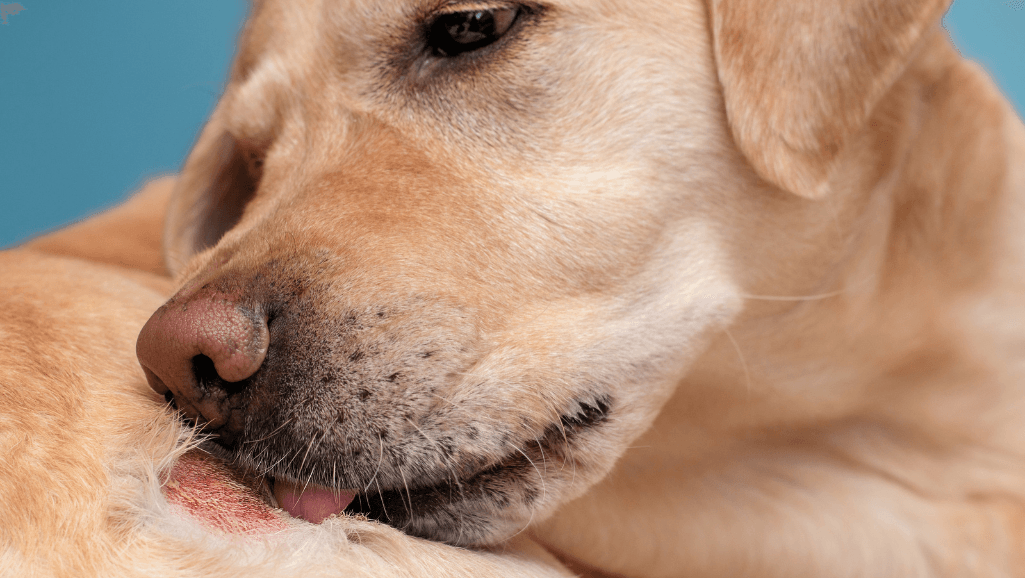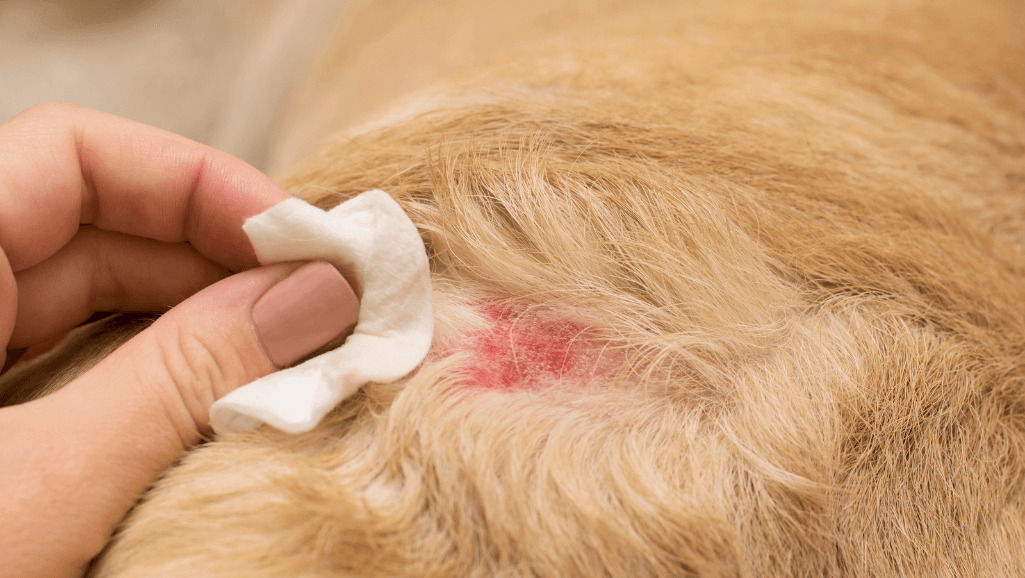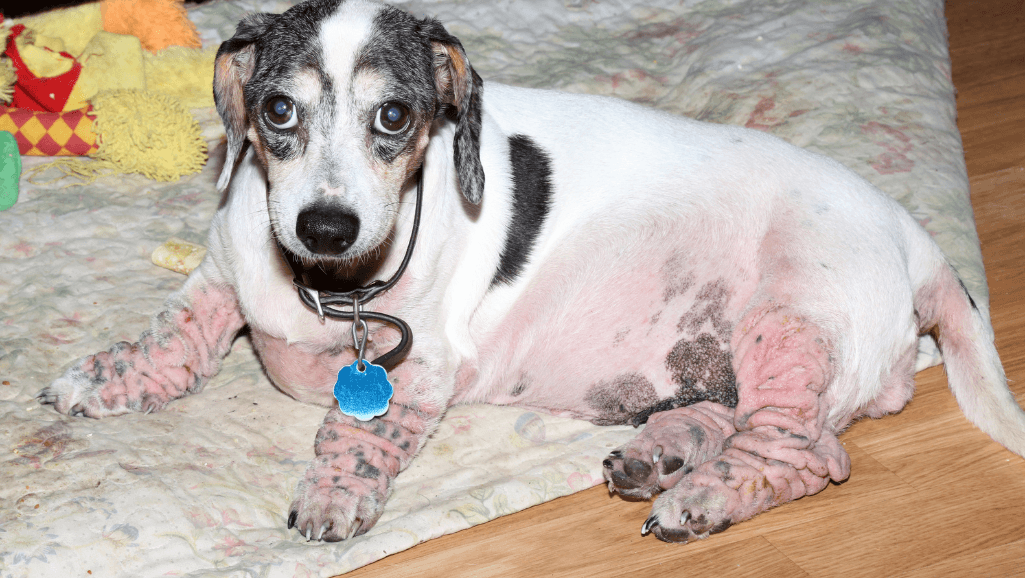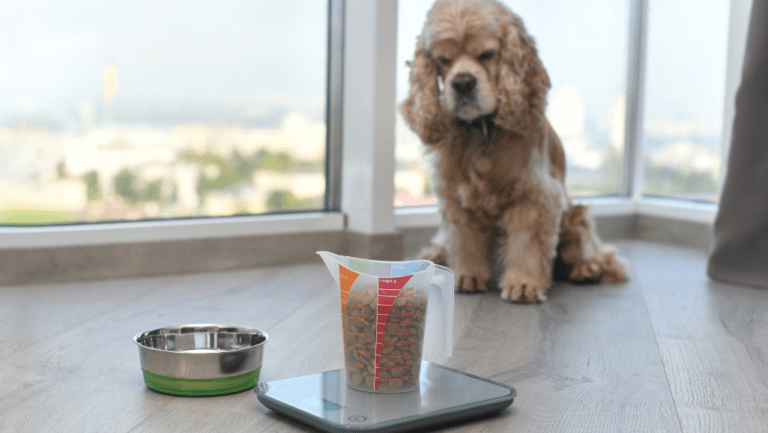Canine allergies can cause discomfort and distress for our beloved furry friends. If your dog is experiencing allergies, it’s essential to understand the various treatment options available. Allergies in dogs can be caused by a range of allergens, including plants, insects, animals, and foods. These allergies can manifest through symptoms such as itching, skin redness, and digestive issues.
Managing canine allergies requires a comprehensive approach that includes identifying and managing specific allergens, using anti-inflammatory medications, bathing with hypoallergenic shampoos, and implementing dietary changes. In this guide, we’ll explore different types of canine allergies, the symptoms to watch out for, and the various diagnostic and testing methods available. Additionally, we’ll provide tips for managing allergies at home and discuss the importance of prevention.
Key Takeaways:
- Effective Canine Allergies Treatment.
- Canine allergies can be caused by a range of allergens, including plants, insects, animals, and foods.
- Symptoms of canine allergies can include itching, skin redness, and digestive issues.
- Treatment options for canine allergies include managing specific allergens, using anti-inflammatory medications, bathing with hypoallergenic shampoos, and implementing dietary changes.
- Regular veterinary check-ups, proper diagnosis, and adherence to treatment plans are essential for managing canine allergies.
- Preventative measures such as maintaining a clean environment and feeding a suitable diet can help prevent canine allergies.
Types and Symptoms of Canine Allergies
Canine allergies can manifest in various types and cause a range of symptoms. Understanding these types and their associated symptoms is essential for effectively managing your dog’s allergies. Let’s explore the different types of dog allergies and the common symptoms they may exhibit.
1. Environmental Allergies
Dogs can develop allergies to environmental factors such as pollen, dust mites, mold spores, and certain grasses or trees. These allergens can trigger allergic reactions, causing symptoms such as:
- Itchy skin
- Redness
- Skin irritation
- Sneezing
- Coughing
- Runny eyes
2. Food Allergies
Food allergies in dogs occur when their immune system reacts to specific ingredients in their diet. Common food allergens for dogs include beef, chicken, dairy products, wheat, and soy. Symptoms of food allergies can include:
- Itching
- Vomiting
- Diarrhea
- Gastrointestinal issues
- Skin problems (such as redness and rashes)
3. Flea Allergies
Some dogs are allergic to flea saliva, leading to a condition known as flea allergy dermatitis. Even a single flea bite can cause an intense allergic reaction. Symptoms of flea allergies may include:
- Severe itching
- Constant scratching
- Skin inflammation
- Hot spots
- Hair loss
4. Contact Allergies
Contact allergies occur when a dog comes into direct contact with an allergenic substance. Common allergens in contact allergies include certain fabrics, cleaning products, or even certain types of plants. Symptoms of contact allergies can include:
- Itchy, red skin
- Bumps or blisters
- Skin irritation
- Hives
5. Allergic Reactions to Medications
Although rare, dogs can also experience allergic reactions to medications. These reactions can range from mild to severe and may include symptoms such as:
- Hives or skin rashes
- Swelling
- Difficulty breathing
- Vomiting
- Diarrhea
Diagnosis and Testing for Canine Allergies
If you suspect that your dog may have allergies, it is crucial to consult a veterinarian for a proper diagnosis. The vet will perform tests to identify the specific allergens causing the allergic reactions. The two main types of allergy tests for dogs are:
Skin Tests:
Skin tests involve introducing small amounts of suspected allergens into the dog’s skin to determine its reaction. This can be done through intradermal testing, where various allergens are injected just beneath the skin, or via a skin patch test, where patches containing potential allergens are applied to the skin for a specific duration. Skin tests are considered the gold standard for diagnosing dog allergies, as they provide accurate and comprehensive results.
Blood Tests:
Blood tests, such as enzyme-linked immunosorbent assay (ELISA) or radioallergosorbent test (RAST), are useful in identifying allergen-specific antibodies in a dog’s blood. These tests can detect the presence of specific allergens and determine the dog’s immune response to them. Though less accurate than skin tests, blood tests can be a viable alternative when skin tests are not feasible or inconclusive.
Once the specific allergens causing the dog’s allergies are identified, a targeted treatment plan can be developed. In some cases, desensitization therapy, commonly known as allergy shots, may be recommended. This involves gradually exposing the dog to small amounts of the identified allergens to build up their tolerance over time. Allergy testing plays a crucial role in the effective management of dog allergies.
In addition to diagnosis, it is essential to keep a detailed record of your dog’s symptoms, triggers, and potential allergens. This information can help guide the treatment plan and assist in monitoring the dog’s progress.
Below is a summarized table of the different allergy testing methods for dogs:
| Testing Method | Description | Advantages | Disadvantages |
|---|---|---|---|
| Skin Tests | Introduction of allergens into the dog’s skin | Highly accurate results | Requires specialized equipment and expertise |
| Blood Tests | Detection of allergen-specific antibodies in the dog’s blood | Non-invasive and convenient | Less accurate than skin tests |
Managing Canine Allergies
Managing canine allergies involves a comprehensive approach that includes environmental management, dietary management, and medications. By implementing these strategies, dog owners can help alleviate symptoms and improve their furry companion’s quality of life.
Environmental Management
- Keep the environment clean: Regularly vacuuming and dusting can help minimize allergens in the home.
- Use air filters: Air purifiers with HEPA filters can effectively remove allergens from the air.
- Remove potential allergens: Identify and eliminate common allergens such as pollen, dust mites, and mold.
Dietary Management
Following a hypoallergenic diet and avoiding allergenic ingredients are key aspects of managing canine allergies. Consult with a veterinarian to determine the most suitable diet for your dog.
Medications
Medications can be prescribed to manage allergy symptoms in dogs. Antihistamines and corticosteroids are commonly used to reduce itching and inflammation. It is important to follow the veterinarian’s instructions when administering medications to ensure the dog’s safety and well-being.
Allergy Shots or Desensitization Therapy
Allergy shots, also known as desensitization therapy, can help reduce a dog’s sensitivity to specific allergens. This treatment involves regular injections of small amounts of allergens to gradually build up tolerance. It is a long-term approach that should be carried out under the guidance of a veterinarian.
By implementing these management strategies, dog owners can help their furry companions live comfortably despite their allergies. However, it is important to consult with a veterinarian before implementing any treatment plan to ensure the best possible care for your dog.
Preventing Canine Allergies
While not all allergies can be prevented, there are steps dog owners can take to reduce the risk of canine allergies. By implementing these preventative measures, you can help ensure the health and well-being of your furry companion.
Grooming and Hygiene
Regular grooming plays a crucial role in preventing allergies in dogs. By removing allergens from your dog’s coat, you can minimize their exposure to potential triggers. Make sure to brush your dog’s fur regularly and consider using a pet-safe, hypoallergenic shampoo. Additionally, trimming your dog’s hair and nails can help prevent the accumulation of allergens.
Environmental Factors
Creating a clean and allergen-free environment is key to allergy prevention. Invest in an air purifier to filter out airborne allergens such as pollen, mold spores, and dust mites. It’s also important to avoid exposing your dog to harsh chemicals and fragrances, as these can sometimes trigger allergic reactions.
Regular Exercise and a Balanced Diet
Providing your dog with regular exercise not only promotes a strong immune system but also helps prevent allergies. Physical activity helps reduce stress and supports overall health, making your dog less susceptible to allergies. Alongside exercise, a balanced and high-quality diet is essential. Opt for dog food that is free from common allergens and carefully monitor your dog’s response to different ingredients.
Choosing the Right Products
When it comes to preventing allergies, it’s important to choose products that are specifically designed for dogs with sensitive skin or allergies. Look for hypoallergenic bedding, toys, and cleaning products to minimize the risk of triggering an allergic reaction in your dog.
Prevention Tips for Canine Allergies
| Prevention Tips | Explanation |
|---|---|
| Grooming and Hygiene | Regularly groom your dog to remove allergens from the coat. Use hypoallergenic shampoos and trim hair and nails to prevent allergen accumulation. |
| Environmental Factors | Invest in an air purifier, avoid harsh chemicals and fragrances, and keep the environment clean to minimize allergen exposure. |
| Regular Exercise and a Balanced Diet | Provide regular exercise to support a strong immune system. Choose a balanced diet free from common allergens and monitor your dog’s response to different ingredients. |
| Choosing the Right Products | Select hypoallergenic bedding, toys, and cleaning products specifically designed for dogs with allergies to minimize the risk of triggering a reaction. |
By following these preventative measures, you can significantly reduce the likelihood of your dog developing allergies. However, if you suspect that your dog may be experiencing allergies despite your best efforts, it’s important to consult with your veterinarian for a proper diagnosis and personalized advice.
Canine Allergy Medications and Supplements
In some cases, dogs may require medications and supplements to manage their allergies. Here are some common options:
1. Antihistamines
Allergy Medications for Dogs: Antihistamines can help block the release of histamine, which reduces itching and inflammation caused by allergies. They are commonly prescribed to alleviate allergy symptoms in dogs.
2. Corticosteroids
Allergy Medications for Dogs: Corticosteroids may be prescribed by a veterinarian to reduce the immune system’s response to allergens. These medications are effective in treating severe allergic reactions and reducing inflammation.
3. Immune Modulators
Allergy Medications for Dogs: Immune modulators are medications that help regulate the immune system response. They can be used to manage allergies in dogs and reduce the severity of symptoms. Consult a veterinarian to determine the suitability and dosage for your dog.
4. Supplements
Dog Allergy Supplements: Certain supplements can support the immune system and reduce inflammation associated with allergies in dogs. Omega-3 fatty acids, such as fish oil, can help alleviate skin irritation. Probiotics can also promote a healthy gut, which can positively affect the immune response.
It is crucial to consult with a veterinarian before administering any medications or supplements to ensure their safety and effectiveness for your specific dog. A professional will be able to provide guidance on proper dosage and potential interactions.
Tips for Managing Canine Allergies at Home
When it comes to managing canine allergies at home, there are several tips and strategies that can help dog owners provide relief for their furry friends. By implementing these practices, you can create a more comfortable and allergen-free environment for your dog.
Grooming and Bathing
Regular grooming and bathing with hypoallergenic shampoos can be effective in removing allergens from your dog’s coat. This helps to minimize the exposure to potential triggers that may cause allergic reactions. Make sure to choose grooming products that are specifically designed for dogs with allergies.
Keeping the Home Environment Clean
A clean home environment is crucial in managing canine allergies. Regularly vacuuming carpets, furniture, and curtains can help remove allergens such as dust mites and pollen. Using air filters and regularly changing air conditioning and heating filters can also significantly improve indoor air quality.
Avoiding Potential Allergens
Identifying and avoiding potential allergens can greatly reduce your dog’s exposure to triggers. Some common allergens for dogs include certain plants, cleaning products, fabrics, and specific foods. Take precautions to eliminate or minimize your dog’s contact with these allergens.
Monitoring for Signs of Allergies
It is crucial to closely monitor your dog for any signs or symptoms of allergies. Common signs may include itching, redness, hair loss, gastrointestinal issues, and sneezing. If you notice any worsening or persistent symptoms, it’s important to seek veterinary care for proper diagnosis and treatment.
Indoor Air Quality
Poor indoor air quality can contribute to allergies in dogs. It’s essential to keep the air in your home clean and free from allergens. Using air purifiers and opening windows for fresh air circulation can help improve the indoor air quality for your dog.
Activities for Allergy Triggers
Understanding your dog’s specific allergy triggers can help you choose suitable activities that minimize exposure. Avoiding outdoor activities during high pollen periods or selecting shady areas can reduce allergen exposure. Opt for hypoallergenic toys and bedding to prevent potential reactions.
| Tips for Managing Canine Allergies at Home | Benefits |
|---|---|
| Regular grooming and bathing | Removes allergens from the dog’s coat |
| Keeping the home environment clean | Improves indoor air quality and reduces allergen accumulation |
| Avoiding potential allergens | Minimizes exposure to triggers |
| Monitoring for signs of allergies | Enables early intervention and appropriate treatment |
| Improving indoor air quality | Reduces allergens in the environment |
| Selecting suitable activities | Minimizes exposure to allergens |
Conclusion
Canine allergies are a common health concern for dogs, and if left untreated, they can cause discomfort and health issues. However, by understanding the types of allergies, recognizing symptoms, and implementing appropriate management strategies, dog owners can help their furry companions live a happy and healthy life. Regular veterinary check-ups, proper diagnosis, and adherence to treatment plans are essential in effectively managing canine allergies.
In addition to veterinary care, preventative measures play a crucial role in allergy prevention and management. Maintaining a clean environment by regularly cleaning the dog’s living areas, using air filters, and removing potential allergens can reduce the risk of allergies. Feeding a suitable diet that avoids allergenic ingredients and follows a hypoallergenic approach can also help manage canine allergies.
If your dog is experiencing allergies, it is important to consult with a veterinarian for personalized care and guidance. They can provide a proper diagnosis, recommend appropriate treatments, and help develop a comprehensive management plan tailored to your dog’s specific needs. With the right care and attention, you can help your beloved canine companion thrive and enjoy a life free from the discomfort of allergies.





















